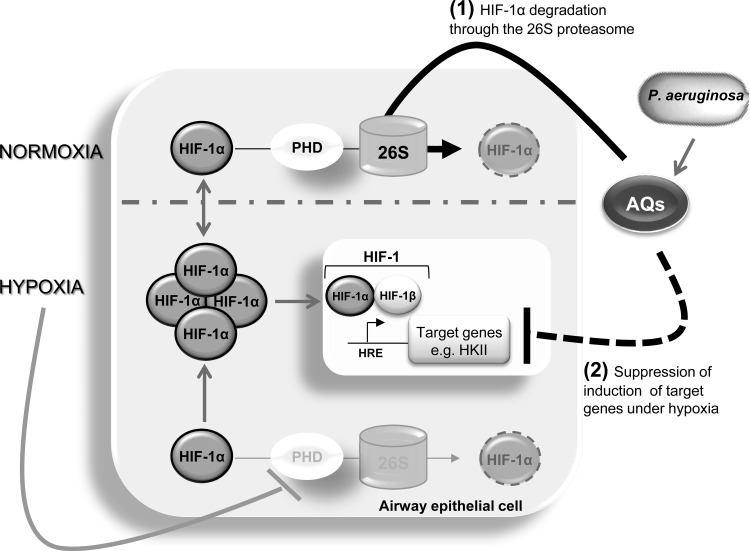Fig 5.
Model: AQ-mediated HIF-1 signaling. Under normal levels of oxygen (normoxia), HIF-1α protein subunit is constitutively synthesized by the cells but quickly degraded through the PHD/26S proteasomal degradation pathway. Reduced oxygen levels (hypoxia) lead to the inhibition of the PHD enzymes that prevent HIF-1α degradation, leading to accumulation of HIF-1α. Upon infection, P. aeruginosa produces an arsenal of molecules involved in its pathogenicity, including the 2-alkyl-4-quinolone (AQ) signaling molecules. Here, we have shown that AQs lead to the degradation of the HIF-1α protein through the 26S proteasome machinery (1), which in turn lead to the suppression of induction of the hexokinase II (HKII) under hypoxia (2).

